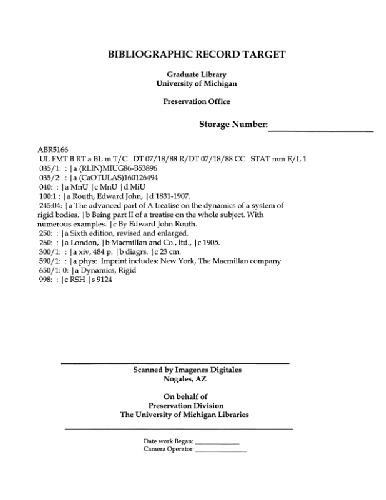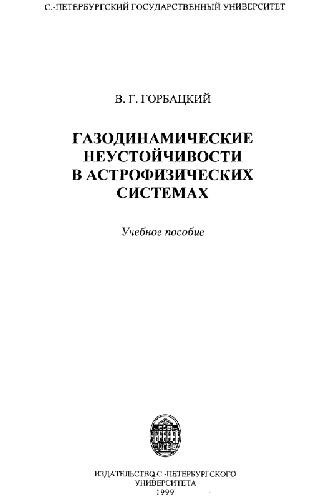Signe Kjelstrup, Dick Bedeaux9812779132, 9789812779137, 9789812779144
The authors apply the thermodynamic description in terms of excess densities, developed by Gibbs for equilibrium, to non-equilibrium systems. The treatment is restricted to transport into and through the surface. Using local equilibrium together with the balance equations for the surface, expressions for the excess entropy production of the surface and of the contact line are derived. Many examples are given to illustrate how the theory can be applied to coupled transport of mass, heat, charge and chemical reactions; in phase transitions, at electrode surfaces and in fuel cells. Molecular simulations and analytical studies are used to add insight.
Contents: General Theory: The Entropy Production for a Homogeneous Phase; The Excess Entropy Production for the Surface; Flux Equations and Onsager Relations; Transport of Heat and Mass; Transport of Mass and Charge; Applications: Evaporation and Condensation; A Nonisothermal Concentration Cell; Adiabatic Electrode Reactions; The Formation Cell; Modeling the Polymer Electrolyte Fuel Cell; The Impedance of an Electrode Surface; The Non-Equilibrium Two-Phase van der Waals Model; and other chapters.
Table of contents :
Contents……Page 10
Preface……Page 8
1.1 What is non-equilibrium thermodynamics?……Page 18
1.3 The purpose of this book……Page 21
2 Why Non-Equilibrium Thermodynamics?……Page 24
2.1 Simple flux equations……Page 25
2.2 Flux equations with coupling terms……Page 26
2.3 Experimental designs and controls……Page 28
2.4 Entropy production, work and lost work……Page 29
2.5 Consistent thermodynamic models……Page 31
3 Thermodynamic Relations for Heterogeneous Systems……Page 34
3.1 Two homogeneous phases separated by a surface in global equilibrium……Page 35
3.2 The contact line in global equilibrium……Page 39
3.3 Defining thermodynamic variables for the surface……Page 40
3.4 Local thermodynamic identities……Page 46
3.5 Defining local equilibrium……Page 49
3.A Appendix: Partial molar properties……Page 52
3.A.1 Homogeneous phases……Page 53
3.A.2 The surface……Page 55
3.A.3 The standard state……Page 57
Part A: General Theory……Page 62
4 The Entropy Production for a Homogeneous Phase……Page 64
4.1 Balance equations……Page 66
4.2 The entropy production……Page 68
4.2.1 Why one should not use the dissipation function……Page 73
4.2.2 States with minimum entropy production……Page 74
4.3 Examples……Page 75
4.4.1 Definitions of frames of reference……Page 81
4.4.2 Transformations between the frames of reference……Page 83
4.A Appendix: The first law and the heat flux……Page 84
5 The Excess Entropy Production for the Surface……Page 90
5.1 The discrete nature of the surface……Page 91
5.2 The behavior of the electric fields and potential through the surface……Page 92
5.3 Balance equations……Page 94
5.4 The excess entropy production……Page 96
5.4.1 Reversible processes at the interface and the Nernst equation……Page 101
5.4.2 The surface potential jump at the hydrogen electrode……Page 103
5.5 Examples……Page 104
6 The Excess Entropy Production for a Three Phase Contact Line……Page 108
6.1 The discrete nature of the contact line……Page 109
6.2 Balance equations……Page 111
6.3 The excess entropy production……Page 112
6.4 Stationary states……Page 113
6.5 Concluding comment……Page 114
7.1 Flux-force relations……Page 116
7.2 Onsager’s reciprocal relations……Page 117
7.3 Relaxation to equilibrium. Consequences of violating Onsager relations……Page 121
7.4 Force-flux relations……Page 122
7.5 Coe cient bounds……Page 123
7.6 The Curie principle applied to surfaces and contact lines……Page 125
8 Transport of Heat and Mass……Page 128
8.1 The homogeneous phases……Page 129
8.2 Coe cient values for homogeneous phases……Page 131
8.3 The surface……Page 134
8.3.1 Heats of transfer for the surface……Page 136
8.4 Solution for the heterogeneous system……Page 139
8.5 Scaling relations between surface and bulk resistivities……Page 142
9 Transport of Heat and Charg……Page 144
9.1 The homogeneous phases……Page 145
9.2 The surface……Page 147
9.3 Thermoelectric coolers……Page 149
9.4 Thermoelectric generators……Page 150
9.5 Solution for the heterogeneous system……Page 152
10 Transport of Mass and Charge……Page 156
10.1 The electrolyte……Page 157
10.2 The electrode surfaces……Page 160
10.3 Solution for the heterogeneous system……Page 163
10.4 A salt power plant……Page 164
10.5 Electric power from volume flow……Page 165
10.6 Ionic mobility model for the electrolyte……Page 167
10.7 Ionic and electronic model for the surface……Page 171
Part B: Applications……Page 172
11 Evaporation and Condensation……Page 174
11.1.1 The entropy production and the flux equations……Page 175
11.1.2 Interface resistivities from kinetic theory……Page 182
11.2 The sign of the heats of transfer of the surface……Page 184
11.3 Coe cients from molecular dynamics simulations……Page 186
11.4.1 The entropy production and the flux equations……Page 193
11.4.2 Interface resistivities from kinetic theory……Page 196
12 Multi-Component Heat and Mass Di usion……Page 200
12.1 The homogeneous phases……Page 201
12.2 The Maxwell–Stefan equations for multi-component di usion……Page 203
12.3 The Maxwell–Stefan equations for the surface……Page 205
12.4.1 Prigogine’s theorem……Page 209
12.4.2 Di usion in the solvent frame of reference……Page 210
12.4.3 Other frames of reference……Page 212
12.4.4 An example: Kinetic demixing of oxides……Page 217
12.5 A relation between the heats of transfer and the enthalpy……Page 219
13 A Nonisothermal Concentration Cell……Page 222
13.1.1 Entropy production and flux equations for the anode……Page 224
13.1.2 Position dependent transport coe cients……Page 227
13.1.3 The profiles of the homogeneous anode……Page 228
13.1.4 Contributions from the cathode……Page 229
13.1.5 The electrolyte contribution……Page 230
13.2.1 The anode surface……Page 231
13.2.2 The cathode surface……Page 234
13.3 The thermoelectric potential……Page 235
14 The Transported Entropy……Page 238
14.1 The Seebeck coe cient of cell a……Page 239
14.2 The transported entropy of Pb2+ in cell a……Page 243
14.3 The transported entropy of the cation in cell b……Page 244
14.4 The transported entropy of the ions cell c……Page 245
14.5 Transformation properties……Page 247
14.6 Concluding comments……Page 249
15 Adiabatic Electrode Reactions……Page 252
15.1.2 The silver chloride phases……Page 253
15.2 The interfaces……Page 254
15.2.2 The silver chloride-electrolyte interfaces……Page 256
15.3 Temperature and electric potential profiles……Page 257
16 The Liquid Junction Potential……Page 266
16.1 The flux equations for the electrolyte……Page 267
16.2 The liquid junction potential……Page 270
16.3 Liquid junction potential calculations compared……Page 272
16.4 Concluding comments……Page 275
17 The Formation Cell……Page 278
17.1.2 The transference coe cient of the salt in the electrolyte……Page 280
17.1.3 An electrolyte with a salt concentration gradient……Page 282
17.1.4 The Planck potential derived from ionic fluxes and forces……Page 284
17.2 A non-isothermal cell with a non-uniform electrolyte……Page 285
17.2.1 The homogeneous anode phase……Page 286
17.2.2 The electrolyte……Page 287
17.2.3 The surface of the anode……Page 289
17.2.4 The homogeneous phases and the surface of the cathode……Page 290
17.3 Concluding comments……Page 292
18.1 The potential work of a salt power plant……Page 294
18.2 The membrane as a barrier to transport of heat and mass……Page 296
18.3 Membrane transport of heat and mass……Page 298
18.4 Osmosis……Page 300
18.5 Thermal osmosis……Page 302
19 Modeling the Polymer Electrolyte Fuel Cell……Page 306
19.1 The potential work of a fuel cell …….Page 307
19.2 The cell and its five subsystems……Page 308
19.3.1 The entropy production in the homogeneous phases……Page 310
19.3.2 The anode backing……Page 312
19.3.3 The membrane……Page 315
19.3.4 The cathode backing……Page 317
19.4 The electrode surfaces……Page 318
19.4.1 The anode catalyst surface……Page 321
19.4.2 The cathode catalyst surface……Page 323
19.5 A model in agreement with the second law……Page 324
19.6 Concluding comments……Page 327
20 Measuring Membrane Transport Properties……Page 328
20.2 The membrane resistivity……Page 329
20.3 Ionic transport numbers……Page 333
20.4 The transference number of water and the water permeability……Page 336
20.5 The Seebeck coe cient……Page 339
20.6 Interdi usion coe cients……Page 340
21 The Impedance of an Electrode Surface……Page 344
21.1 The hydrogen electrode. Mass balances……Page 345
21.2 The oscillating field……Page 348
21.4.1 The adsorption-di usion layer in front of the catalyst……Page 349
21.4.2 The charge transfer reaction……Page 353
21.4.3 The impedance spectrum……Page 354
21.5 A test of the model……Page 355
21.6 The reaction overpotential……Page 356
22 Non-Equilibrium Molecular Dynamics Simulations……Page 358
22.1 The system……Page 361
22.1.1 The interaction potential……Page 363
22.2 Calculation techniques……Page 364
22.3.1 Local equilibrium in a homogeneous binary mixture……Page 368
22.3.2 Local equilibrium in a gas-liquid interface……Page 370
22.4.1 A homogeneous binary mixture……Page 373
22.4.2 A gas-liquid interface……Page 375
22.6 Molecular mechanisms……Page 376
23 The Non-Equilibrium Two-Phase van der Waals Model……Page 378
23.1 Van der Waals equation of states……Page 380
23.2 Van der Waals square gradient model for the interfacial region……Page 383
23.3 Balance equations……Page 386
23.4 The entropy production……Page 388
23.5 Flux equations……Page 389
23.6 A numerical solution method……Page 390
23.8 Defining excess densities……Page 395
23.9 Thermodynamic properties of Gibbs’ surface……Page 396
23.10 An autonomous surface …….Page 397
23.11.1 Properties of dividing surfaces……Page 401
23.11.2 Surface excess densities for two dividing surfaces……Page 402
23.11.3 The surface temperature from excess density di erences……Page 403
23.12 The entropy balance and the excess entropy production……Page 405
23.13 Resistivities to heat and mass transfer……Page 407
23.14 Concluding comments……Page 409
References……Page 410
Symbol Lists……Page 432
Index……Page 440
About the Authors……Page 450







Reviews
There are no reviews yet.